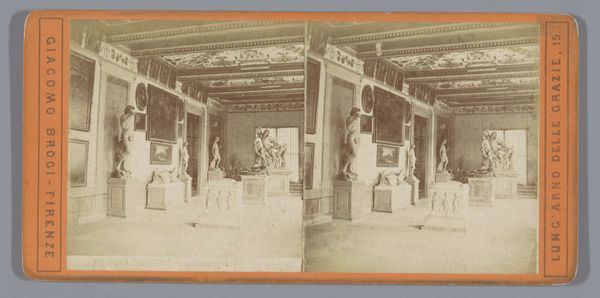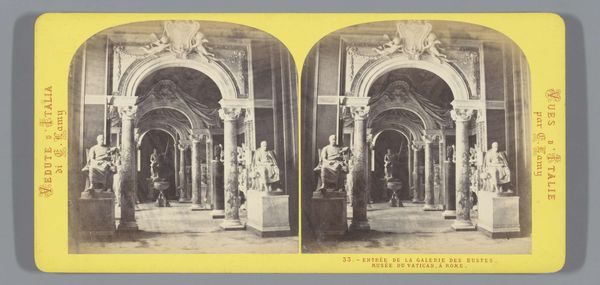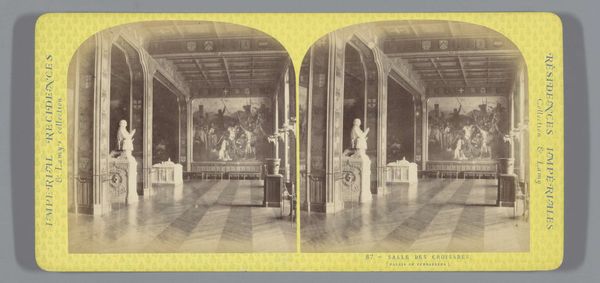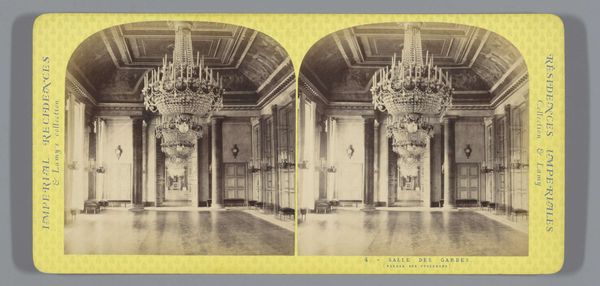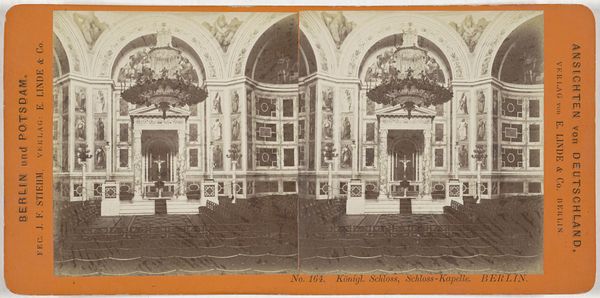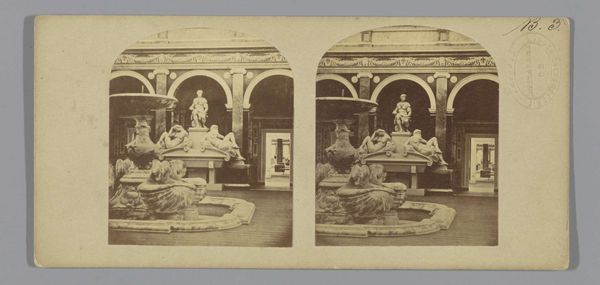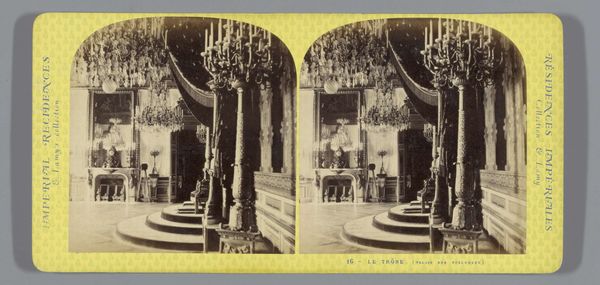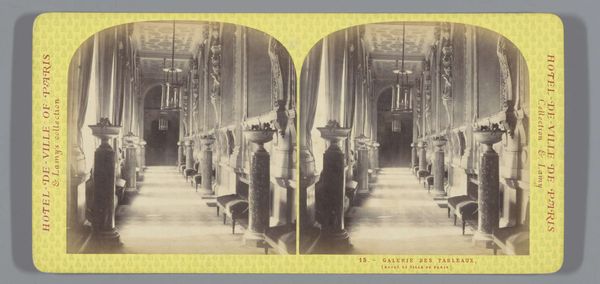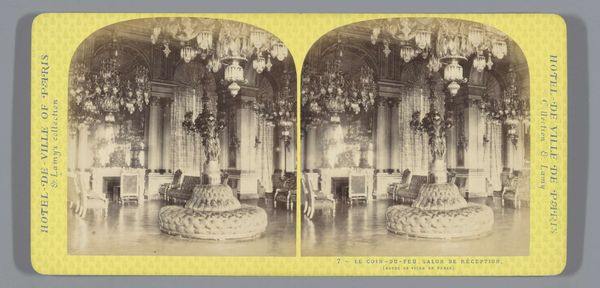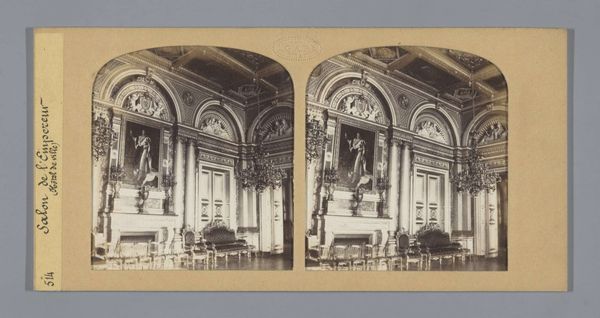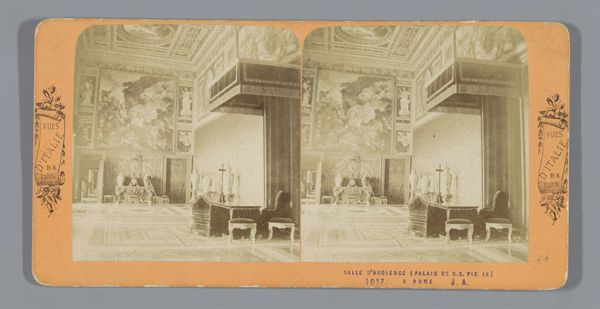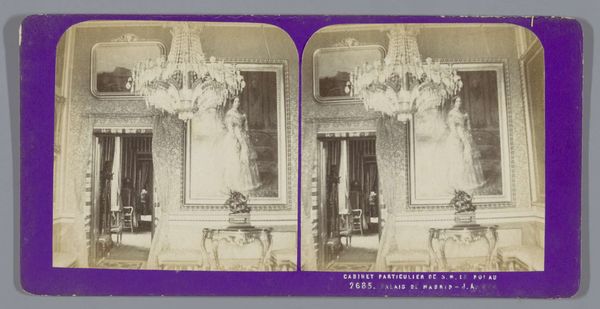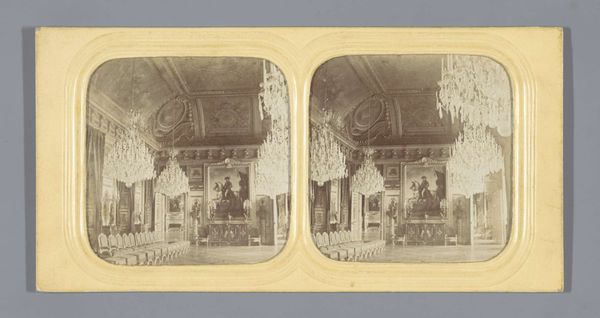
Halfronde zaal in de Braccio Nuovo (nieuwe vleugel), Museo Chiaramonti, Vaticaanstad 1861 - 1878
0:00
0:00
Dimensions: height 87 mm, width 178 mm
Copyright: Rijks Museum: Open Domain
Editor: This stereograph, taken by Ernest Eléonor Pierre Lamy between 1861 and 1878, depicts the Halfronde zaal in the Braccio Nuovo of the Vatican Museums. It’s really striking how this photographic print captures the texture of the marble sculptures and architectural details. What's your perspective on this piece? Curator: It's a fascinating document of 19th-century modes of viewing and consuming art, wouldn’t you agree? Think about the labor involved in creating the sculptures themselves, then the additional layers of work in producing and distributing these images. We’re not just looking at the Vatican's collection; we’re looking at a commodity circulated for mass consumption, and crafted via a fairly elaborate silver-gelatin process. What does it tell us about who had access to art and knowledge during that era? Editor: That’s a really interesting point. So, beyond just documenting the space, this image also reveals the mechanics of cultural dissemination. Is the photograph trying to imitate paintings in any way? Curator: Absolutely. Consider the deliberate composition, carefully framing the sculptures within an architectural setting. It emulates established pictorial traditions but relies on photographic technology to make art accessible and reproducible. Notice the staging of the sculptures themselves; are they presented in the manner a painting of the space would show? How do you view this choice? Editor: So, in a way, this photograph isn't just a neutral record but a constructed narrative about art, its materials, and the social systems that produce and circulate it. Curator: Precisely. We've shifted from a simple image to a complex intersection of labor, materiality, and consumption. Editor: It's made me rethink how seemingly straightforward depictions can hold so much more about cultural values and access. Curator: Indeed, that’s a central lesson to learn here. The circulation of such images and artifacts is nearly as revealing as their form and iconography.
Comments
No comments
Be the first to comment and join the conversation on the ultimate creative platform.
